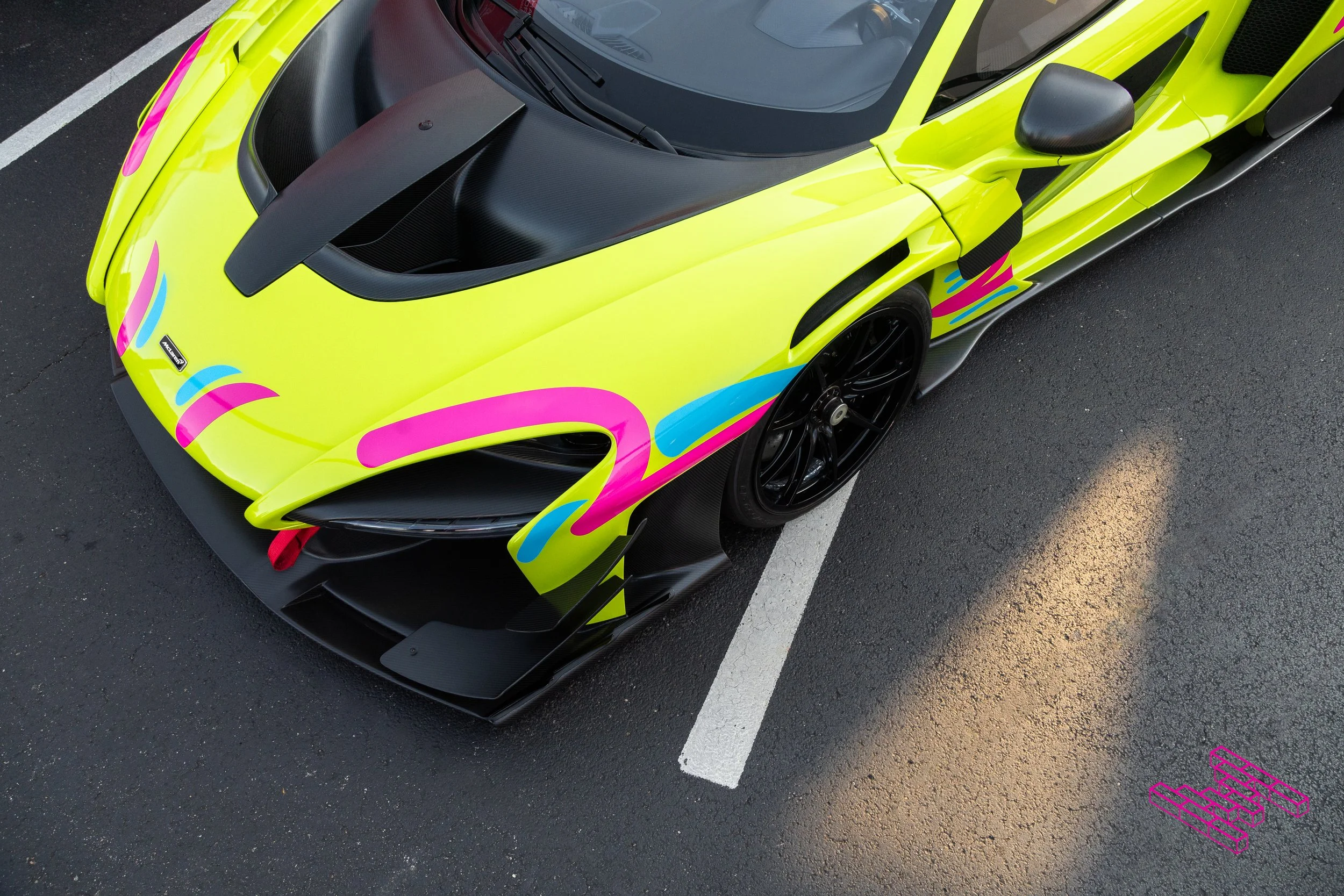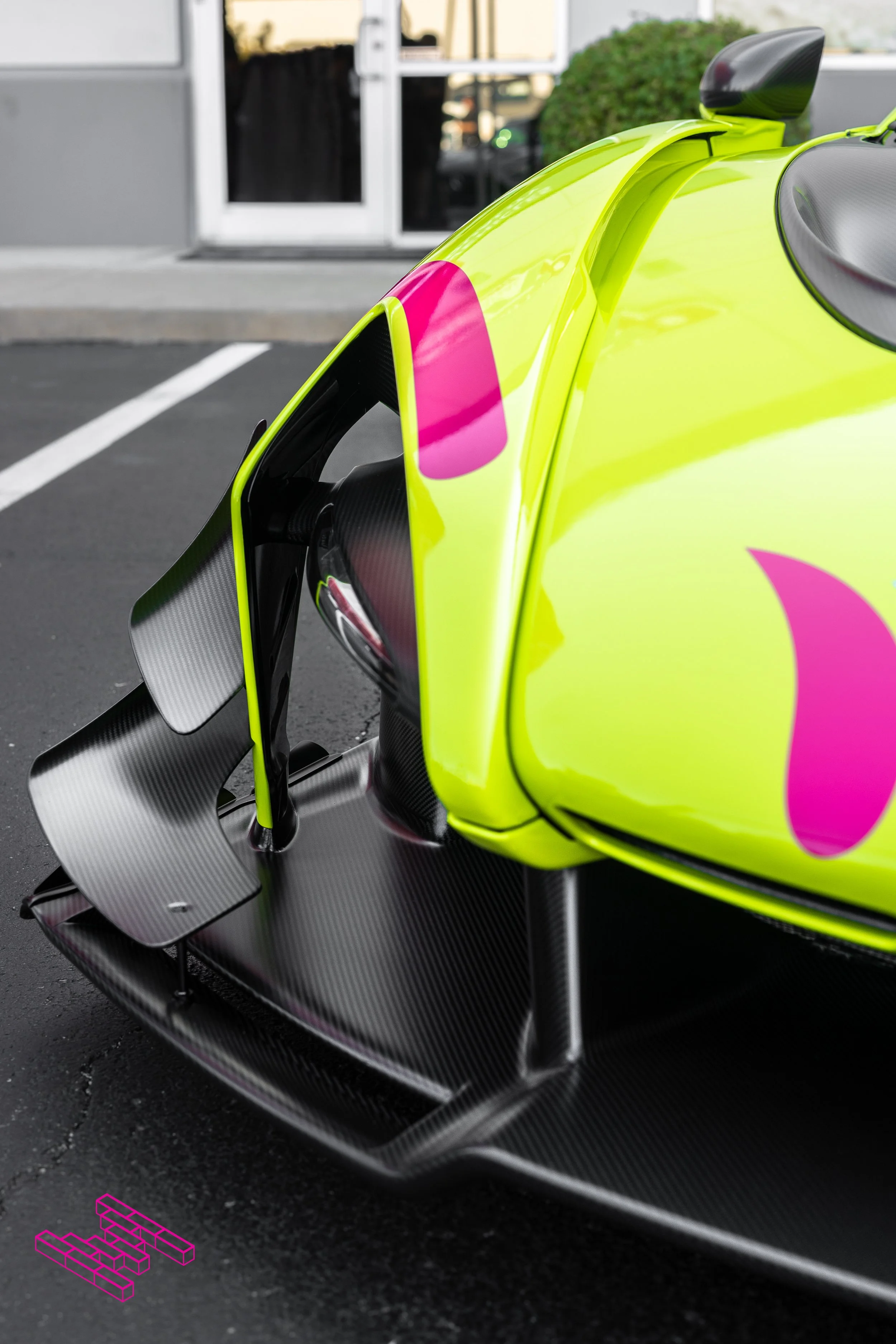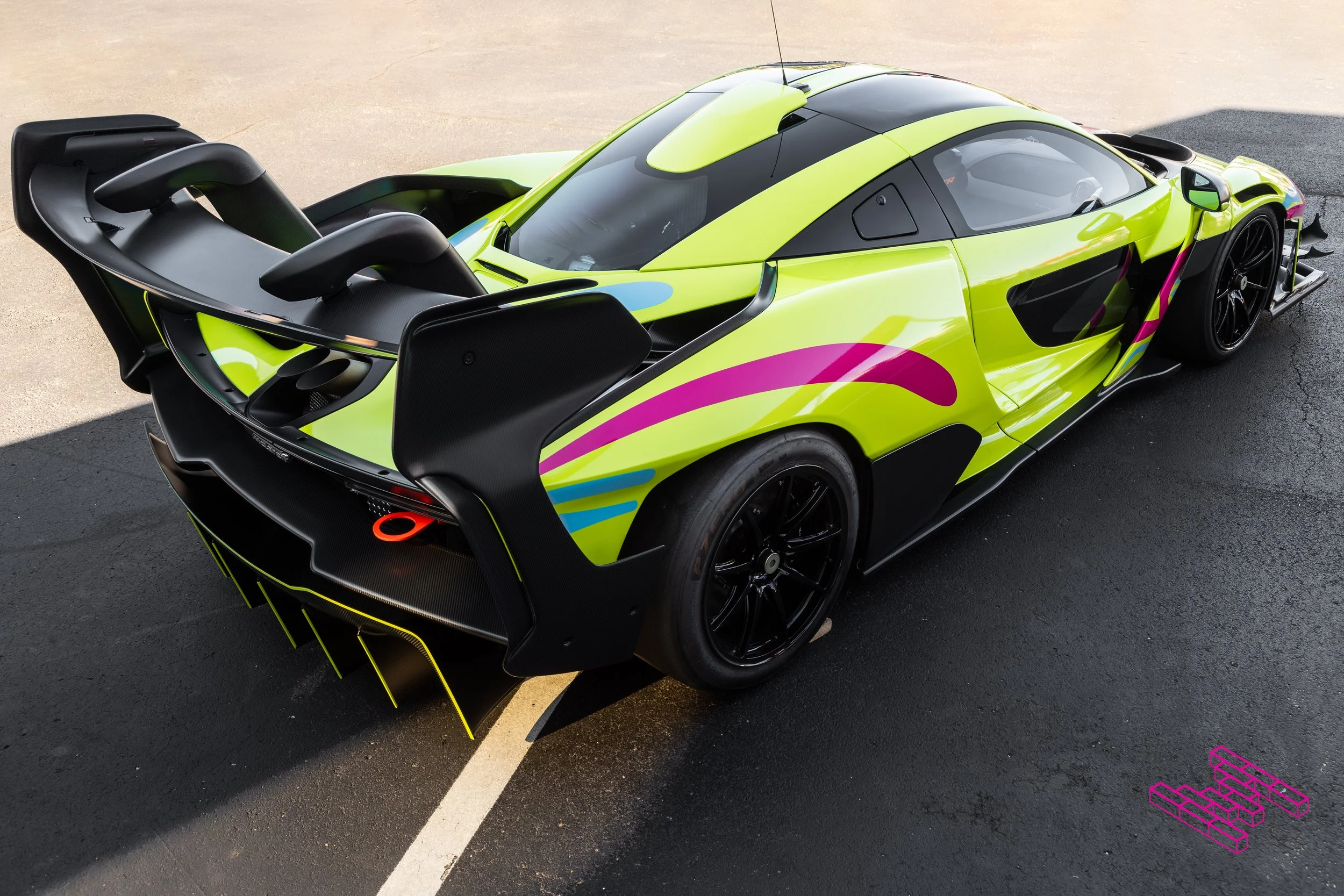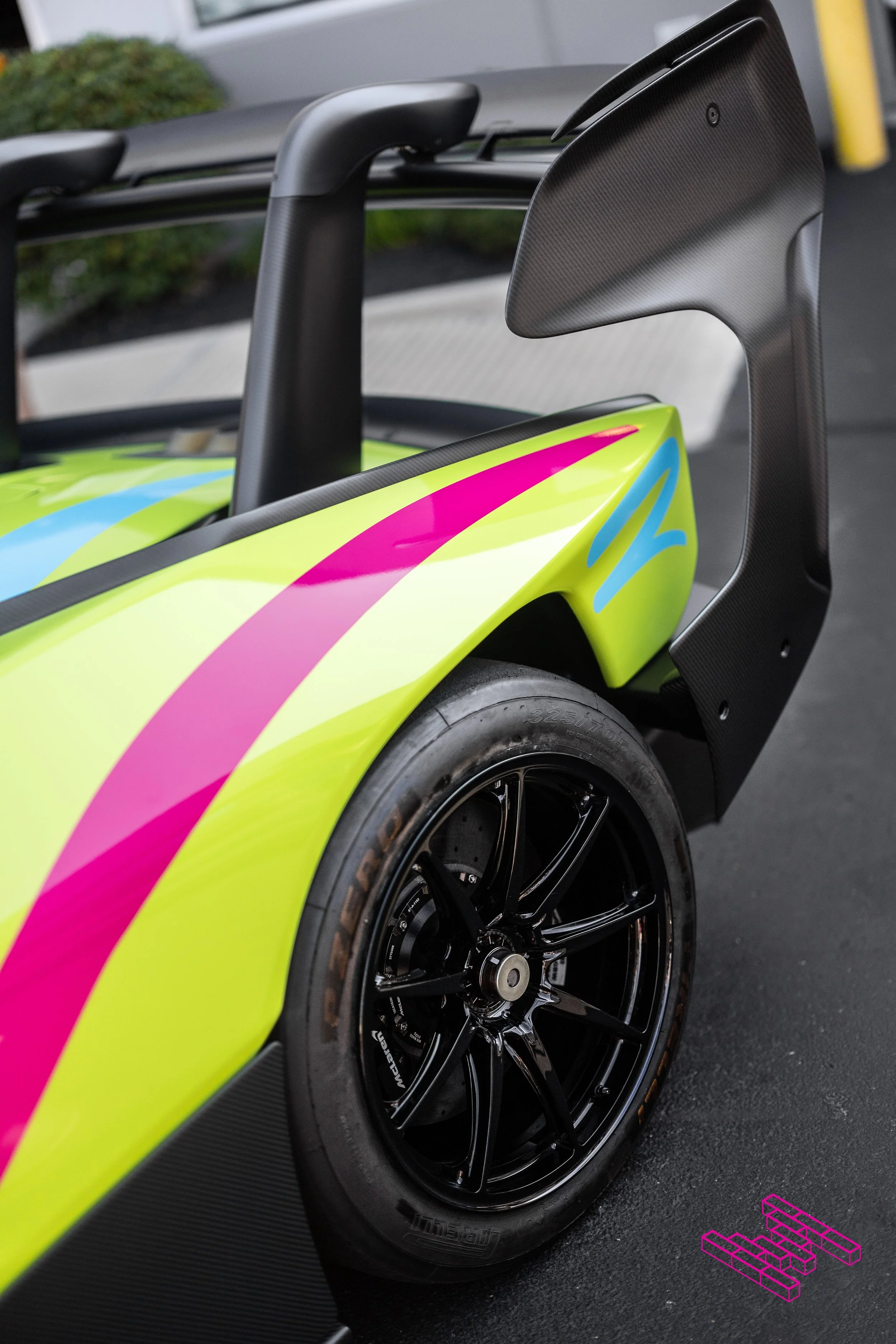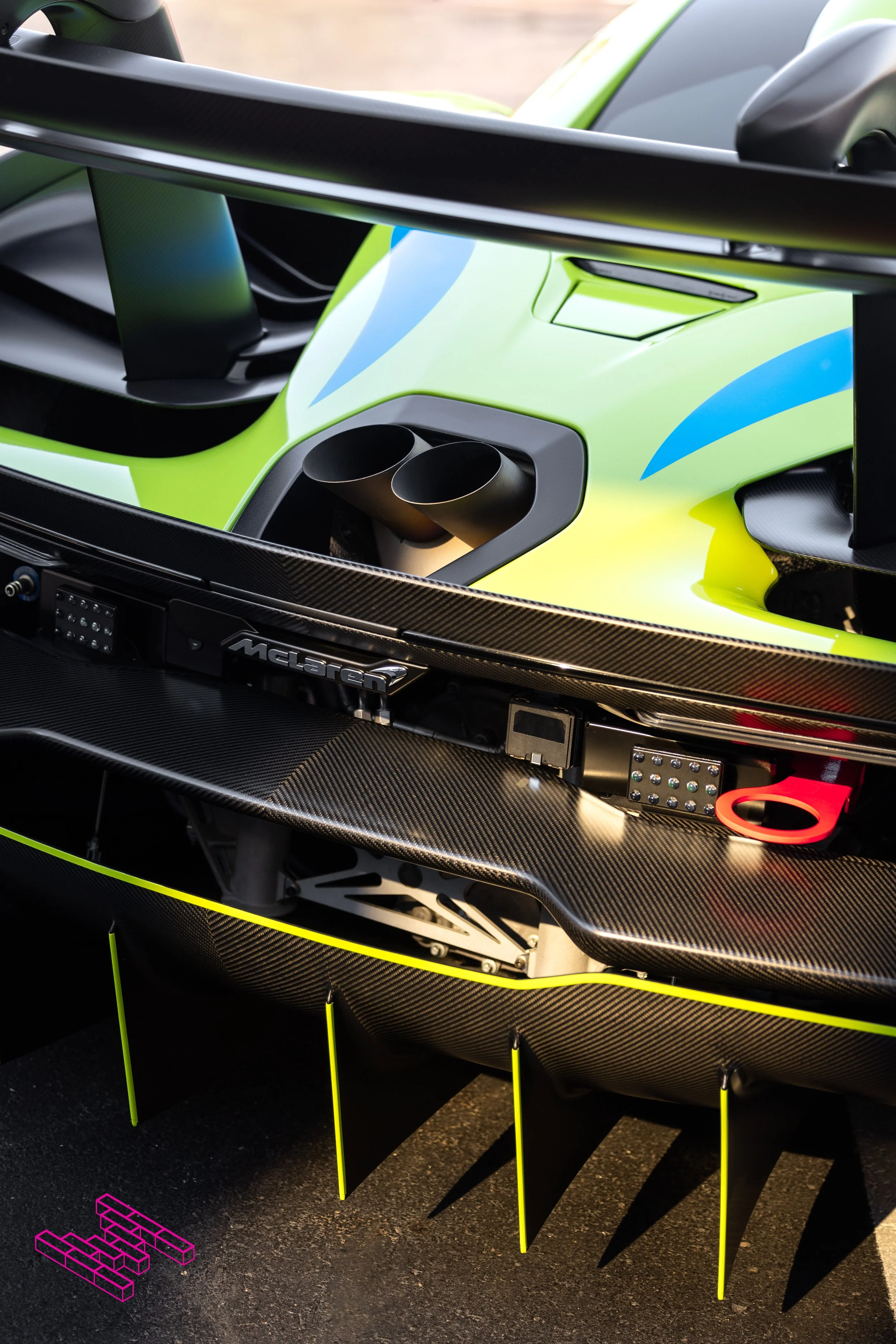McLaren Senna GTR with Graham Rahal
I had the incredible opportunity to photograph a head-turning, neon themed, wing-studded McLaren Senna GTR, one of only 75 ever built. IndyCar driver Graham Rahal met with me for some photos at his facility, GRP, on the northwest side of Indianapolis.
I’ve photographed my share of extreme McLaren road cars, but nothing compares to seeing to a track-only monster in person like the Senna GTR. Based on the unbelievably street-legal Senna, McLaren took a chassis already at home slicing up apexes at high speed on race tracks, and let F1 aerodynamicists and racing engineers loose on the design.
Huge aero, everywhere.
Walking up to the GTR, the first thing you notice is just how huge and extreme its features are. The front overhang is easily longer than the entire front wheel. Extending beyond and under the wedge shaped nose, a large chassis-mounted wing stretches the entire width of the car, protruding several inches forward with a wide gap under the nose allowing air to travel over the wing and under the car. The front of the car is absolutely massive in person, I cannot overstate that. With just 3 inches of ground clearance up front with such a long nose, I would imagine driving the GTR around any tight corners or avoiding inclines and trailer ramps while transporting is quite a challenge.
Adorning the large front end of the GTR is an impressive array of dive planes and strakes, designed to generate raw downforce, but that also carefully direct airflow downstream to the rest of the bodywork.
Under the menacing, dark eye socket-like headlight openings are two additional elements to the front wing. The front of the wing has another slotted element, bringing the total to 4 elements. The corners of the wing are lined with vortex generators, above and below the side edges. The flowing bodywork where the huge dive places attach cleverly wraps into concave turning vanes, with gaping tunnels for air to travel through the front of the car to the sides, reducing front wheel wake. Did I mention the dive places? They only pale in size to prototype endurance cars. Below the windshield is a massive split radiator exit, wrapping to the corners of the windshield. I could admire the front of the GTR for hours -it’s an incredible piece of engineering to behold.
Graham Rahal Performance
Graham opened his performance focused car dealership in 2017, aiming high towards high performance cars, and later motorcycles. Beyond just being a dealership, GRP has since become renowned for specialty work and bespoke customization on cars like the legendary 00’s super car, the Porsche Carrera GT, among many other classics and exotics. GRP often has rare and unique cars available. When I arrived, I was greeted by cars like the mentioned multiple Carrera GTs in several colors, a bright red Ferrari Enzo, a rare metallic purple Porsche 911 Sport Classic, a dark red 80s Lancia Integrale Evo, some secret project cars, and of course the bright green McLaren Senna GTR Graham poses next to for a photo with me.
Graham tells me about the work that went into designing the unique neon wrap on the car, the facility’s first of many to come. The in-house design invokes 90s aesthetics with rounded baby blue and pink splashes along the length of the car. The look almost feels like it could be a 90s Wimbledon poster -maybe the tennis ball green is what does it for me. The wrap gives the otherwise ultra-aggressive looking GTR some playfulness, which reminds me of great racing liveries of the late 80’s and 90’s like the Benneton F1 cars or the Castrol Supra.
That rear wing, though.
If you thought the front of the GTR was insane looking, your eyes draw you to the arguably craziest part. I completely forgot the middle of the car existed as I passed the alien looking cockpit, the slim roof scoop air intake, and headed straight to the rear end. My mouth was agape as I stared at the sheer size of the piece of carbon fiber in front of me.
The incredibly wide and tall rear wing with integrated side endplates frame the entire outline of the car when viewed front on. It hangs quite far off the rear axle, yet dominates the car from almost any angle due to the size. Two enormous tube-like carbon fiber uprights rise out of gaping slotted vents on the rear of the car. The two swan neck uprights attach to the wing via hydraulically controlled pivots, allowing for the entire two element wing to become an active aero surface under braking and on high-speed straights. Think DRS, but whenever the driver wants. The multi-slotted side endplates are easily 3 feet from top to bottom, and have large scalloped contours following the profile of the long stretching rear fender arches. The wing is not dissimilar in aerodynamics and appearance to Formula 1 cars from the past decade.
Between the vents on the top of the rear and between the uprights is an opening for a duel tip exhaust. A large diffuser spans most of the width of the car with several vertical vanes dividing the vast diffuser volume. Above the diffuser the Senna GTR resembles many other hyper and track focused cars, using negative space to create the rear end of the car… another way of saying, it’s just a big open cooling duct for that powertrain. The rear tail lights are nothing more than slim horizontal LED strips below the large carbon Gurney flap. A large red tow hook sticks out amongst two F1-style LED grid rain light clusters with the subframe and suspension visible within.
The rear fenders open up with huge angular intakes sticking out nearly a foot from the door line. Under the wide side intake is another tunnel-like channel that flows from the gap behind the front wheels, under the side intakes and into the rear diffuser. The leading edge of the diffuser under the car and between the rear tires is visible from the side of the car… I have never seen something like this on a road-derived car! The incredibly cool see-through door windows remain from the Senna, but the front fenders on the GTR extend wider, with openings above and exposing the front tires.
To the next level.
Excluding the visibly extreme aero changes, the GTR improves upon the Senna’s powertrain and chassis limits as a road car. An additional 25hp is tuned from the 4.0L twin turbo V8, mainly through unrestricted exhaust, and the suspension is entirely replaced by 720S GT3 race car derived components. The car loses 22lbs thanks to “unnecessary” road safety features changed like the removal of airbags, polycarbonate windows and windshield, and lighter interior components.
The chassis, powertrain and suspension improvements would all add up to a much faster car alone, but coming back to aero is where the numbers don’t lie. The GTR produces over 2,200lbs of peak downforce, 800 more than the Senna. The wider Pirelli track-only slick tires are the icing on this racing cake, taking the Senna from a hyper car to a true race car. The Senna allegedly laps faster than the 720S GT3 car and LMP3 cars, which is incredible for something sold directly to customers, not racing teams.


